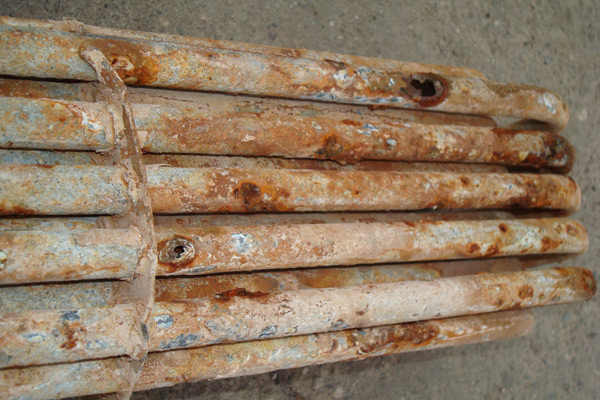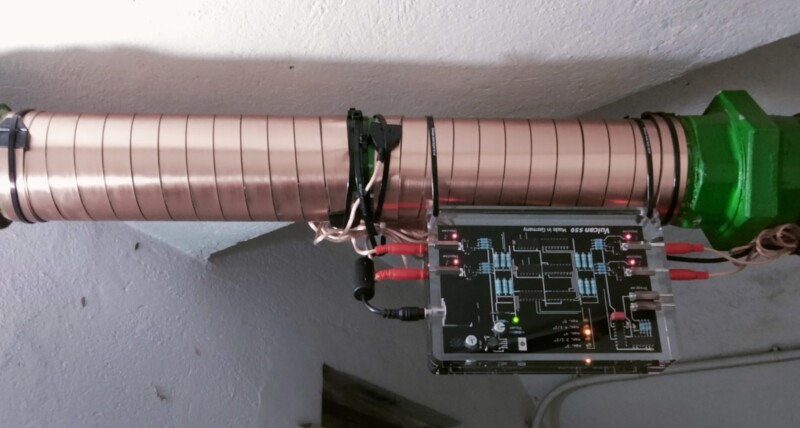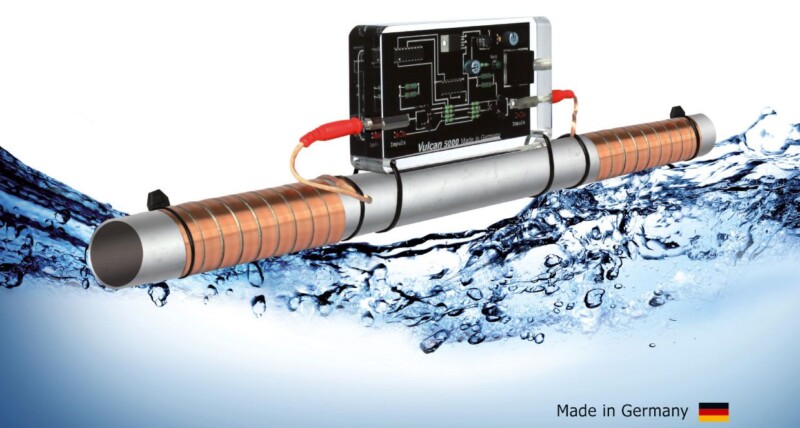[et_pb_section fb_built=“1″ admin_label=“section“ _builder_version=“4.16″ global_colors_info=“{}“][et_pb_row column_structure=“3_5,2_5″ _builder_version=“4.20.2″ _module_preset=“default“ global_colors_info=“{} "][et_pb_column type="3_5″ _builder_version="4.20.2″ _module_preset="default" global_colors_info="{}"][et_pb_text _builder_version="4.20.4″ _module_preset="default" global_colors_info="{}"]
What is lime and how is it formed?
Lime consists mainly of calcium and magnesium - two minerals that in and of themselves have a healthy effect on the human body. But what is good for us humans quickly becomes a problem elsewhere, as lime builds up in pipes, machines or on surfaces around the house.
So-called hard water has a high calcium content:
The more calcium, the harder the water and the more problems it can cause.
[/et_pb_text][/et_pb_column][et_pb_column type=“2_5″ _builder_version=“4.20.2″ _module_preset=“default“ global_colors_info=“{}“][et_pb_image src=“https://www.aguaris.com/wp -content/uploads/2023/03/DSC_8937-rotated.jpg" _builder_version="4.20.4″ _module_preset="default" global_colors_info="{}"][/et_pb_image][/et_pb_column][/et_pb_row][et_pb_row _builder_version= “4.20.2″ _module_preset=”default” global_colors_info=”{}”][et_pb_column type=”4_4″ _builder_version=”4.20.2″ _module_preset=”default” global_colors_info=”{}”][et_pb_text _builder_version=”4.20.4. XNUMX″ _module_preset="default" global_colors_info="{}"]
How is lime formed?
Limescale deposits form as soon as hard water flows through a water pipe.
The liquid calcium contained in untreated water crystallizes into a sticky structure.
These crystals stick to each other and to surfaces, where they immediately form solid limescale deposits that have destructive consequences.
[/et_pb_text]Edit 3″ _module_preset="default" global_colors_info="{}"][et_pb_text _builder_version="5,2″ _module_preset="default" global_colors_info="{}"]
Change in water pressure
Limescale accumulates especially when the water pressure changes. This happens when water changes direction at a bend or intersection, which in turn causes water turbulence; or when it leaves the pipe system through a faucet. This drop in pressure also increases the formation of limescale.
[/et_pb_text][/et_pb_column][et_pb_column type=“2_5″ _builder_version=“4.20.2″ _module_preset=“default“ global_colors_info=“{}“][et_pb_image src=“https://www.aguaris.com/wp -content/uploads/2023/03/1.2.1-Veraenderung-des-Wasserdrucks.jpg" title_text="1.2.1 Change in water pressure" _builder_version="4.20.4″ _module_preset="default" global_colors_info="{}"] [/et_pb_image][/et_pb_column]Edit 3″ _module_preset=“default” global_colors_info=“{}”][et_pb_text _builder_version=“5,2″ _module_preset=“default” hover_enabled=“5″ sticky_enabled=“4.20.4″]
Increase in water temperature
Limescale forms particularly in warm areas such as heating elements, radiators or water heaters. The hotter the surface, the more limescale forms.
This information only applies to Spain!
[/et_pb_text][/et_pb_column][et_pb_column type=“2_5″ _builder_version=“4.20.4″ _module_preset=“default“ global_colors_info=“{}“][et_pb_image src=“https://www.aguaris.com/wp -content/uploads/2023/03/1.2.2-Influence-of-Temperature-1.jpg" title_text="1.2.2 Influence of Temperature" _builder_version="4.20.4″ _module_preset="default" global_colors_info="{} “][/et_pb_image][/et_pb_column][/et_pb_row][/et_pb_section]




